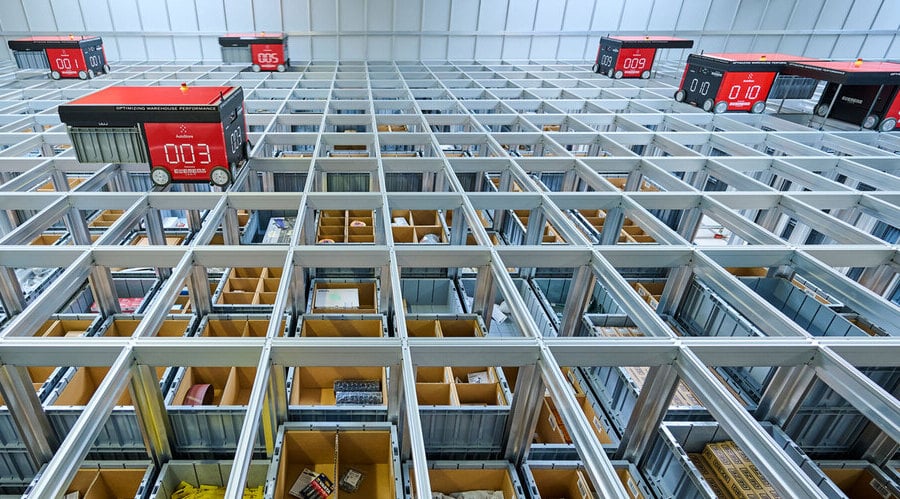Energy-Efficient Warehousing with Small Robots
Learn about the energy-saving benefits of automation, its collaboration with human workers, and its role in sustainable business practices.
In the dynamic world of warehousing, achieving optimal energy efficiency is a critical goal. Traditional manual warehouses typically demand significantly more space, which in turn escalates the need for heating, cooling, and lighting – all contributing to higher energy consumption. Furthermore, the physical energy required for manual tasks like heavy lifting, repetitive movements, and extended work hours is substantially greater in these settings.
Amidst this landscape, automation emerges as a game-changing solution, offering a way to significantly reduce the energy footprint of warehouse operations. With various automation options accessible, it's intriguing to note that over 80% of warehouses still operate manually.
This blog delves into how AutoStore, a frontrunner in warehouse automation, is revolutionizing the industry by dramatically enhancing energy efficiency and reducing the energy costs associated with manual warehousing.

Financial and environmental footprint of manual warehousing
As most global warehouses continue to heavily rely on manual picking, sorting, and storage, a substantial amount of electricity is consumed in maintaining the facility and its storage and retrieval operations. This is a key factor explaining why supply chains significantly contribute to global carbon emissions, especially when combined with the transportation of goods.
Manual warehousing is not only expensive for companies but also hampers employee development, enables human errors, and, most importantly, has a negative impact on the environment.

Do robots really consume that much energy?
There has long been a perception that automation requires power-hungry machinery, which goes against the idea of adopting eco-friendly practices. This is not the case with AutoStore. In fact, ten AutoStore Robots only consume the same amount of energy as a single vacuum cleaner (100W). These Robots not only recharge themselves at the right time to avoid excessive charging, but also has regenerative energy functions to recharge their batteries whenever they lower a Bin or reduce speed.
{{quote}}
These little robots work as part of the AutoStore Automated Storage and Retrieval System (ASRS) solution, derived from stacking storage Bins one on top of the other in a super-tight storage configuration - the Grid. In this system, Robots travel on top of the Grid to retrieve storage Bins and deliver them to workers manning the system’s workstation. Instead of replacing workers, this form of automation promotes collaboration between man and machine - all in a sustainable and scalable package. Utilizing this high-density system, clients increase their storage capacity while reducing their overall warehouse footprint by up to 75%.

Video: Watch Eletroimportøren talk about AutoStore's Energy Efficency
One of the reasons Elektroimportøren chose AutoStore was the minimal electricity requirement.
A win-win for your business and the environment
As various governments across the world become stricter with policies involving carbon emissions, automation can be used as a win-win for both improving businesses as well as meeting the expectations set by the government. The Singapore government, for example, aims to achieve net zero by 2050. They are also accelerating the low-carbon transition for the industry, economy, and society through the four key thrusts of catalyzing business transformation, investing in low-carbon technologies, pursuing effective international cooperation, and adopting low-carbon practices. The adoption of automation can aid with these goals, as well as improve the output of warehouses.
Illustrating the impact of warehouse automation, Hayabusa's Japanese installed a total of 23,000 Bins and 76 Robots from AutoStore, which translated to a 165% sales increase and double the warehouse’s original capacity. Moreover, the increased workspace enabled effective social distancing measures during the COVID-19 pandemic while also contributing to lowered energy consumption and reduced carbon emissions.

In the end, businesses bear the responsibility of providing best-in-class service while also acting in the best interest of the environment. Automation brings substantial enhancements to stock processing and distribution efficiency, enabling efficient customer service. Let’s work together to not only help your bottom line, but more importantly — our environment.
Ten robots of the AutoStore system use approximately the same amount of energy as a vacuum cleaner.












